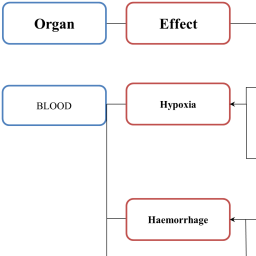Investigating cell type specific mechanisms contributing to acute oral toxicity
Main Article Content
Abstract
The replacement of animals in acute systemic toxicity testing remains a considerable challenge. Only animal data are currently accepted by regulators, including data generated by reduction and refinement methods. The development of integrated approaches to testing and assessment (IATA) is hampered by an insufficient understanding of the numerous toxicity pathways that lead to acute systemic toxicity. Therefore, central to our work has been the collection and evaluation of the mechanistic information on eight organs identified as relevant for acute systemic toxicity (nervous system, cardiovascular system, liver, kidney, lung, blood, gastrointestinal system, and immune system). While the nervous and cardiovascular systems are the most frequent targets, no clear relationship emerged between specific mechanisms of target organ toxicity and the level (category) of toxicity. From a list of 114 chemicals with acute oral in vivo and in vitro data, 97 were identified with target organ specific effects, of which 94% (91/97) were predicted as acutely toxic by the 3T3 neutral red uptake cytotoxicity assay and 6% (6/97) as non-toxic. Although specific target organ mechanisms of toxicity could in some cases explain the false negative prediction obtained with the cytotoxicity assay, in general it is difficult to explain in vitro misclassifications only on the basis of mechanistic information. This analysis will help to prioritize the development of adverse outcome pathways for acute oral toxicity, which will support the assessment of chemicals using mechanistically informed IATA.
Article Details
Articles are distributed under the terms of the Creative Commons Attribution 4.0 International license (http://creativecommons.org/licenses/by/4.0/), which permits unrestricted use, distribution and reproduction in any medium, provided the original work is appropriately cited (CC-BY). Copyright on any article in ALTEX is retained by the author(s).


